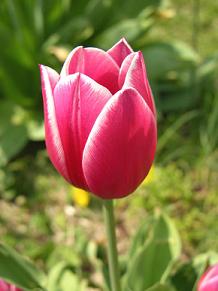For many parts of the U.S., spring has already sprung or is just around the corner. It’s an exciting time for gardeners, who have yet another chance to tend to and raise some some amazing plants, veggies, fruits, and flowers. Consult the guide below for recommendations on how to best tackle gardening in your region. All Areas –
If you’ve neglected your houseplants all winter, now is the time to start feeding and watering them again. If necessary, repot them, and when watering make sure not to overdo it. If you have wet soil in your garden, avoid walking on it. Get your soil tested so you know what you’re up against this spring and summer.
The Regions:
Mid-Atlantic –
Average March Temps: Low 25.4° High 44.5° (Albany, NY) , Low 37° High 58.4° (Richmond, VA)
While frost is still an issue in March, hardy annuals such as Alyssum, Dianthus, and Viola can still go out before the last expected frost. Hold off on planting your summer bulbs and tubers until the soil warms up and dries, and plant shrubs when the ground warms. You’ll also want to wait on planting vegetables and fruits until the danger of frost has passed and the ground is no longer frozen and is actually workable. If you have roses in your garden, prune them before buds break.
Midwest –
Average March Temps: Low 25.7° High 47.3° (Sioux City, IA), Low 36° High 55.8° (Kansas City, MO)
Frost is also an issue in many Midwestern states during the month of March, so you’ll want to start growing your seeds indoors. You can also cut back grasses, as well as finish pruning shrubs. Start spraying fruit trees.
Northeast –
Average March Temps: Low 25.2° High 42.2° (Portland, ME), Low 20.1° High 38.1° (Montpelier, VT)
It’s still rather cold in the Northeast in March, so like the Midwest, you’ll want to start your warm season seeds indoors and keep an eye on plant crowns that might have heaved out of the ground during a thaw. Towards the end of the month as it warms up, you can start removing mulch.
Pacific Northwest –
Average March Temps: Low 14° High 30° (Missoula, MT), Low 35° High 45° (Seattle, WA)
March in the Pacific Northwest is conducive to starting your seeds of greens indoors. Things you can do to start preparing your garden include: deadheading early bloomers, continuing to mulch, diligently hunt slugs and set out your apple maggot traps. At the end of the month you can plant peas.
Southeast –
Average March Temps: Low 33° High 53° (Birmingham, AL), Low 50° High 72° (Orlando, FL)
Unlike the northern parts of the country, in the southeast you can start actually planting things in the ground. This is an excellent time to plant cool season vegetables such as lettuce, peas, root veggies, cabbage, broccoli, chard, and greens. You can also plant cool season flowers and berry bushes. Cool season greens and root crops (carrots, onions, beets, radishes, turnips) can be planted directly outdoors. Seeds of warm season vegetables like tomatoes, peppers, and eggplant should be started indoors at this time.
Southwest –
Average March Temps: Low 17° High 41° (Colorado Springs, CO), Low 41° High 66° (Phoenix, AZ)
The Southwestern portion of the U.S. can also start planting things outdoors beginning in March, but freezes are still possible so you’ll want to keep covers on hand. Start out by pulling back your mulch so that the soil can warm up. You can start planting your summer bulbs, as well as beets, greens, lettuce, potatoes, and corn. Indoors, you’ll want to start growing your eggplant, peppers, tomatoes, squash and melons – it’s still a little too cold for them.
Regional Exceptions:
Florida –
Average March Temps: Low 64° High 80° (Miami, FL), Low 50° High 73° (Tallahasse, FL)
It’s tropical season in Florida right now, so for the most part you’re safe. Cold spells can happen on occasion, so keep prepared. At this time you can begin replacing cool weather annuals with summer annuals, and start putting your perennials in the ground so they can establish. Plant your warm season crops before it gets too hot out. You should have already started growing your citrus trees in containers, now you can transplant those outdoors. Established citrus trees can be fertilized now, but you should wait 4 to 6 weeks to feed newly planted ones.
Northern California –
Average March Temps: Low 50° High 68.6° (Chico, CA), Low 44.5° High 69.9° (San Francisco, CA)
In Northern California, March is the time to start planting summer blooming bulbs and tubers. You’ll also want to prune old growth off the bougainvillea, plant potatoes, and fertilize trees and shrubs. Feed your roses, and harden and set out seedlings. It’s a great time to start gardening!
Southern California –
Average March Temps: Low 44.5° High 69.9° (Los Angeles, CA), Low 41.9° High 74° (Carlsbad, CA)
If you haven’t done it already, start your seeds. It’s also time to spray fruit trees and divide fall blooming perennials. Start scouting for slugs and snails.
Hawaii –
Average March Temps: Low 45.3° High 62.6°
Hawaii is a year-round, gardening paradise. At this time of the year you’ll want to continue mulching and start feeding your gardenias. It’s also time to sow a cover crop.
Alaska –
Average March Temps: Low 38.1° High 51.7° (Anchorage, AK) While many people think of Alaska as perpetually snowy, it’s actually got four seasons and gets warm. March, however, is still on the cold side so it’s best to start your seeds indoors right now. You can also check on your rhubarb, it could be up.
